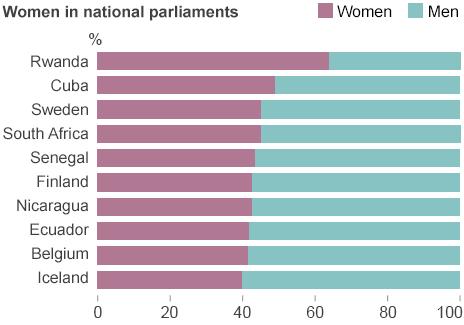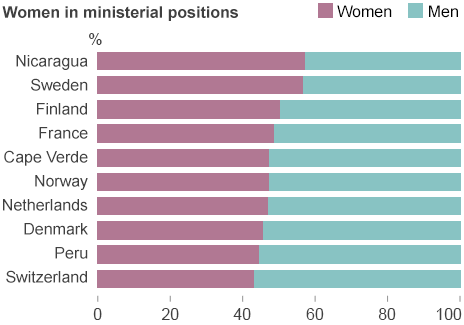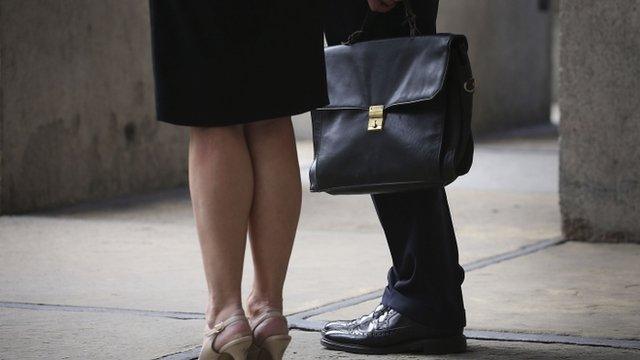'Sweeping change' narrows gender gap
- Published
- comments
Increased access for women to politics and the workforce has narrowed the global gender gap in the past 10 years, the World Economic Forum (WEF) said.
The WEF's annual gender survey, external confirmed "sweeping changes" in many countries, with 105 becoming more equal since 2005, said its author.
Iceland tops the list for the sixth year running, with Yemen placed last.
The WEF looked at economic factors, health, education and political participation in 142 countries.
Just six nations - Sri Lanka, Mali, Croatia, Macedonia, Jordan and Tunisia - have seen their gender gap grow overall since 2005, the WEF said.
One of the reasons for Iceland's success is its relatively small population while Yemen struggles due to high mortality rates and high rates of girls aged six to 14 not in school.
Rwanda's rise
The Nordic states all topped the list, with Finland, Norway and Sweden following Iceland in the top five.
The UK fell eight spots down the global rankings to 26. Rwanda came into the rankings for the first time and took seventh place, making it the highest-ranking African economy.
Changes in women's income were behind Britain's fall, said the WEF. The recession has caused the gender pay gap to widen in the UK.
On the other side of the Atlantic, the US inched up three places to 20 as wage gaps have narrowed and the percentage of women in political and ministerial-level positions improved, it said.
Social forces
Report author Saadia Zahidi said Rwanda's success was because there are almost as many women as men at work - and in the country's ministerial offices - rather than because of improved access to health and education services.
Nicaragua rose to become the sixth-best place for women (up from 10 last year). The Philippines remained the highest-ranking Asian state, but fell from fifth to ninth place.

Analysis: Philippa Thomas, BBC News correspondent

The outcomes of these scores are influenced by social forces.
India, for example, fell 13 places to 114th this year and is the lowest out of the so-called Brics countries.
But politically, India, at 15, is higher in the rankings than the US, at 54 and the UK, at 33. The WEF said this is as India generally has a lot of women leaders in politics, including senior leaders such as Sonia Gandhi.
Ms Zahidi said women's participation in public life in India had been adversely affected by questions around whether it is safe to use public transport.
Globally, much of the progress on gender equality has come from more women entering politics and the workforce, she said.
She added: "While more women and more men have joined the workforce over the last decade, in 49 countries, more women than men entered the labour force.

Source: IPU/WEF
"And in the case of politics, globally, there are now 26% more female parliamentarians and 50% more female ministers than 10 years ago. These are sweeping changes - for economies and national cultures."
Ms Zahidi said countries often reach an improved status due to quotas and targets, for example imposing quotas at the stage of choosing candidates for election.

Source: IPU/WEF

How the WEF measures the gender gap:
Can women work and do they get the same pay for the same job?
Do they have access to education?
Are they allowed to exercise political power?
What about health - not just the life expectancy of women, but the ratio of women to men within society?

Development by Ransome Mpini and Melanie Moeller, design by Gerry Fletcher. Produced by Nassos Stylianou and John Walton.
- Published19 August 2014
